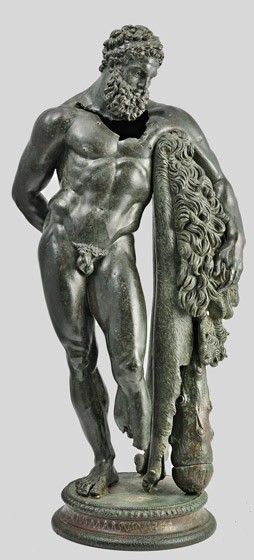In the Hellenistic era, images of divine beings, like those of mortals, became less ideal and more realistic or “human.” Herakles (Latin: Hercules), whose heroic deeds earned him immortality, now appeared fatigued from his labors rather than invincible — an expression of pathos intended to provoke viewers’ sympathy. Artists also portrayed the gods’ variable natures, representing Athena (Latin: Minerva), goddess of war and wisdom, as a young maiden as well as a formidable warrior. Eros, the child of the goddess of love, Aphrodite, and the god of war, Ares, had been portrayed as a graceful adolescent in the Classical period but was transformed into a pudgy baby, inspiring Roman images of the god Cupid and the cherubs and putti of the Italian Renaissance. Deities became more accessible, now thought of as living beings whose moods and experiences paralleled those of ordinary people.
Pictured: Weary Herakles, AD 1 – 100; bronze, copper, and silver. Lent by the Museo Archeologico Nazionale dell' Abruzzo, Villa Frigerj, Chieti
